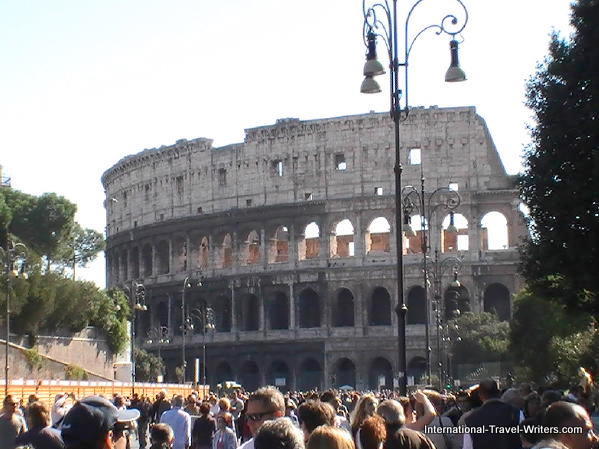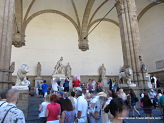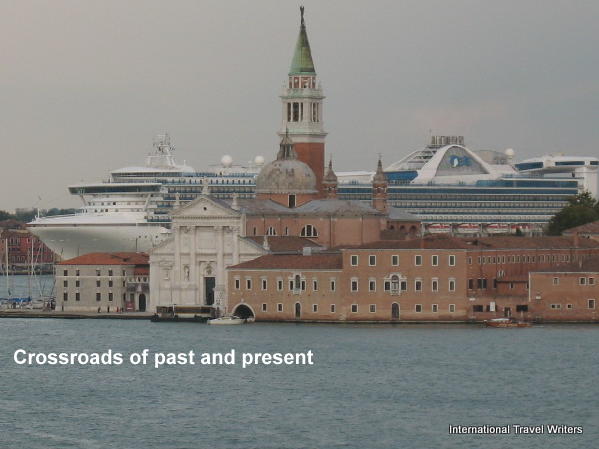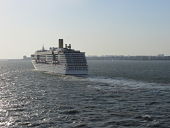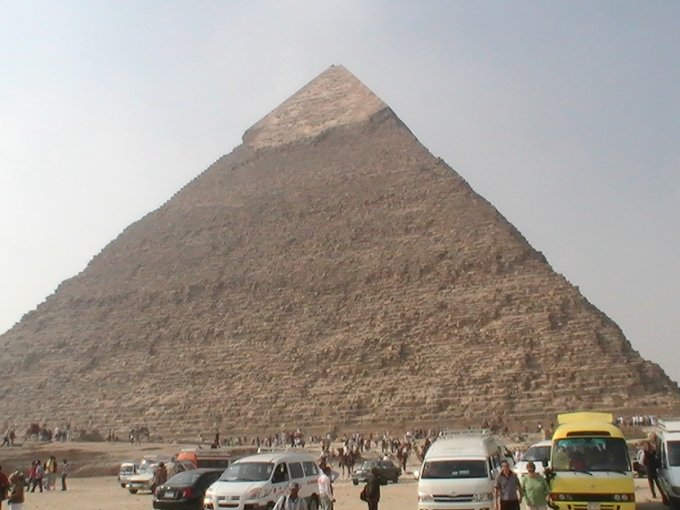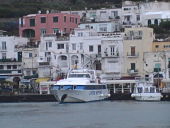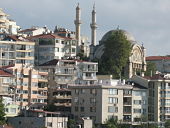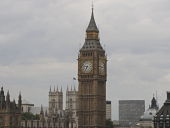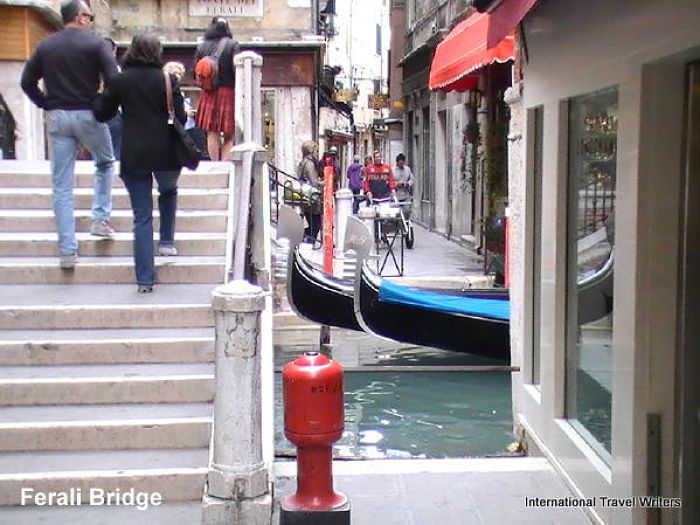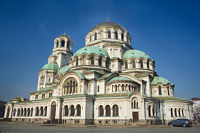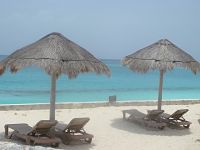Florence, Italy

Florence was on our list of historic cities that we wanted to visit. A personal perception was that while Rome had its historical place in history as being the mighty capital of its powerful conquering armies...that this city was the romantic and artistic center that spawned such greats as Michelangelo.
Although we would give the "romantic" award to Venice, this city does merit recognition for its Renaissance art, architecture and original monuments that exist in very few other places.
The historic center of Florence does indeed attract millions of tourists each year and despite the fact that it was declared a World Heritage Site by UNESCO in 1982 and has been ranked by Forbes as one of the most beautiful cities in the world...it simply didn't "grab" us. However, we could still appreciate its artistic and architectural heritage and admire the fabulous sculptures.
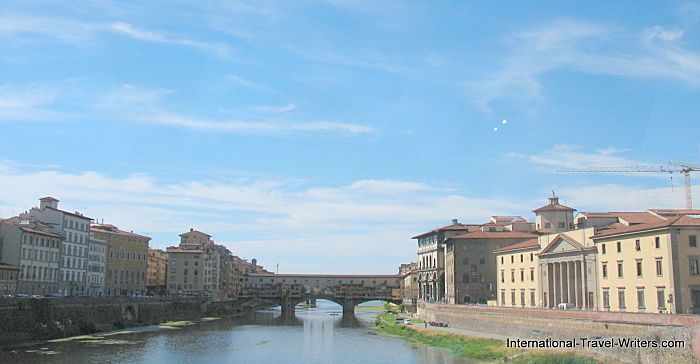
The Arno River with its bridges has enormous visual appeal. The city was obviously ancient but it was also extremely clean. Ponte Del Vecchio, their major bridge was built in 1345 and open air bazaar vendors take advantage of its tourist appeal, selling high-end jewelry...along with Gucci knock-offs.
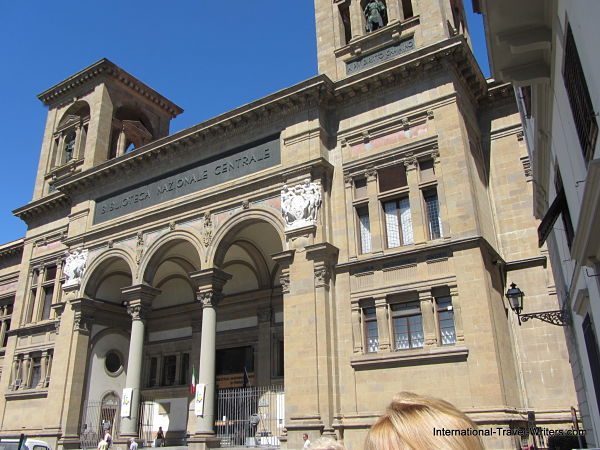
Our tour guide led us to Piazza San Firenze and turned us loose for a few hours to enable us to explore on our own. We were supplied with small maps with some highlights underlined. The Biblioteca Nazionale Centrale di Firenze (National Central Library of Firenze) is seen in the photo above.
The library was founded in 1714 when Antonio Magliabechi bequeathed his entire collection of books (approximately 30,000 volumes) to the city. By 1743 it was required that a copy of every work published in Tuscany be submitted to the library. The library was opened to the public in 1747 and then combined with the Biblioteca Palatina in 1861. It was renamed to its current name in 1885 and since 1870 the library has collected copies of all Italian publishers.
Since 1935 the collections have been housed in a building located along the Arno river in the quarter of Santa Croce.
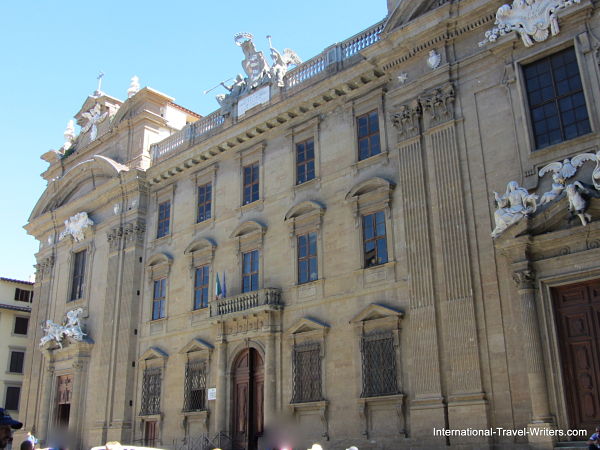
The Complesso de San Firenze (Complex of Saint Fiorenzo) is an example of baroque architecture in the city. The square is an elongated almond shape. When the San Filippo fathers came to Florence in 1640, Pope Urban VIII granted them part of Piazza San Firenze. It included tower houses and smaller buildings as well as the church of San Firenze.
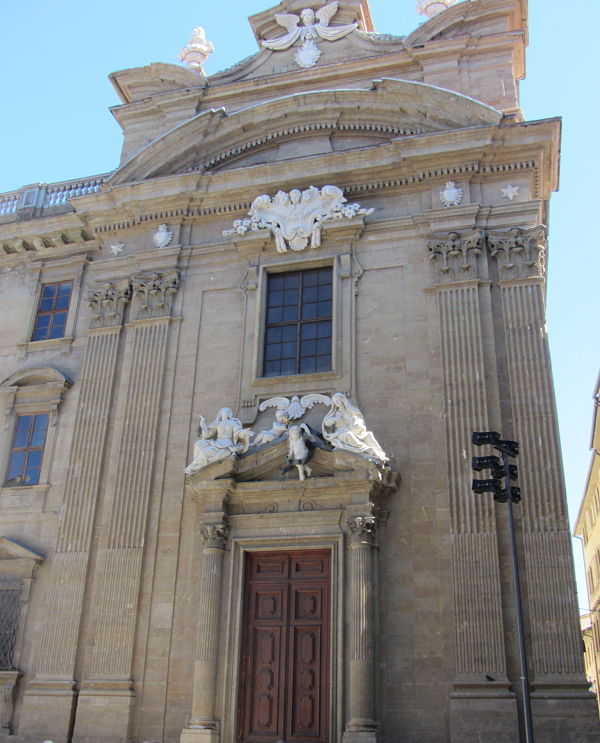
The San Filippo fathers embarked upon their creation of a large complex (monastery, church, and an oratory). The grand facade of 1667 designed by Silvani was not completed until 1772.
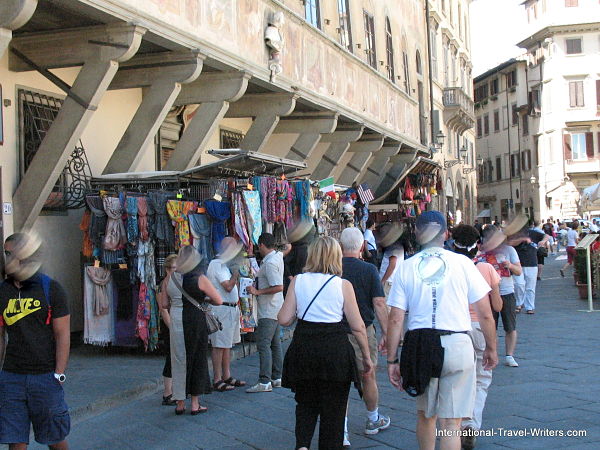
Wandering through the narrow streets it was customary to all of a sudden be in a large open piazza where you could browse designer shops selling handcrafted leather purses and shoes, and tailor-made suits. In one of the piazzas you can even buy underwear with the bottom half of David on them.
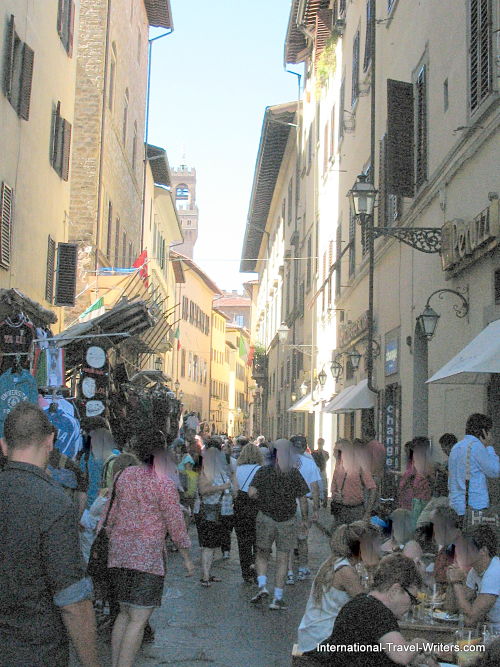
The narrow, alley-like streets also had small outdoor cafes where although the area was cramped, the patrons seemed to be enjoying their conversations and beverages. Sun-glass vendors and hat sellers abounded down a few of these pathways.

One of the cute little shops was a Pinocchio store, selling all sizes of the puppets. It attracted crowds when we first passed the shop but on the second time, while returning to meet our transportation back to our ship, the area was almost devoid of customers perhaps because of the heat of the afternoon sun.
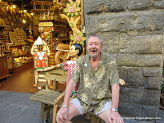 Having fun with Pinocchio |
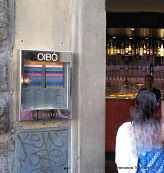 Lunch at Oibo Cafe |
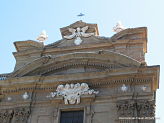 Facade-Complex San Firenze |

Cosimo I de'Medici (photo above) is seen in the equestrian work done by Gianbologna. He was first Medici to amass a fortune of the approx. equivalent of 30 million USD which enabled him (and his family that followed) to exert influence and wield great political power. He was Lorenzo's father.
Florence was home to one of history's most important noble families, the Medici. Lorenzo de'Medici was considered a political and cultural mastermind of Italy in the late 15th century. Two family members became popes and Catherine de Medici married King Henry II of France and after his death in 1559 she reigned as regent in France.
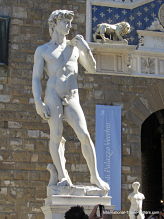 Michelangelo's David |
 Rear view Neptune Fountain |
 Complex of San Firenze facade |

Neptune Fountain in the Piazza della Signoria in Florence

The political core of Florence, Piazza della Signoria, is the location of the Palazzo Vecchio which is now a museum and town hall. There is a the magnificent Neptune Fountain that exists a few steps away from the museum entrance with a statue of David.
Palazzo Vecchio (old palace) remains the symbol of local government and since 1872 it has housed the office of the mayor of Florence and it is the seat of the City Council. It overlooks the statues of the Loggia dei Lanzi.
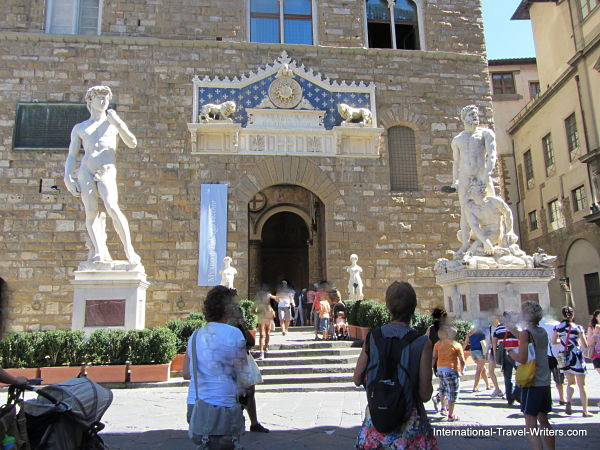
The 17 foot tall statue of David is at the entrance of the Palazzo Vecchio Museum. This is a replica placed there in 1910 because the original (which stood there from 1504) was moved to the Galleria dell'Accademia in 1873. The Accademia contains some of Michelangelo's most important works. The replica of David is flanked by Baccio Bandinelli's Hercules and Cacus.
Above the front entrance door there is an ornamental marble piece dating from 1528. The center is the Monogram of Christ flanked by two gilded lions. In 1851 text was added..."Rex Regum et Dominus Dominantium". The latin translates to "Jesus Christ, King of Kings, and Lord of Lords"
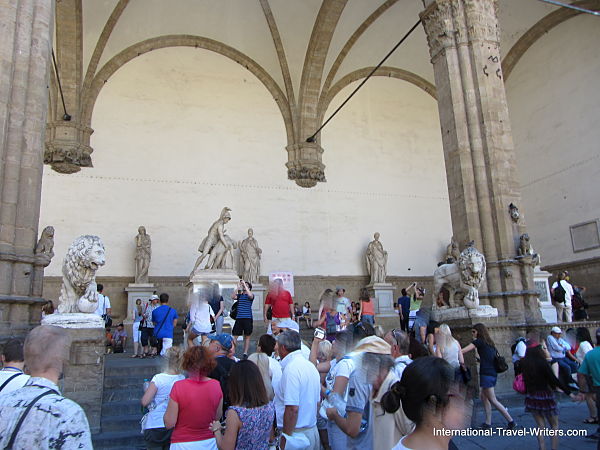
The Loggia dei Lanzi houses many notable statues. The link to the main pieces is listed at the bottom of this article.
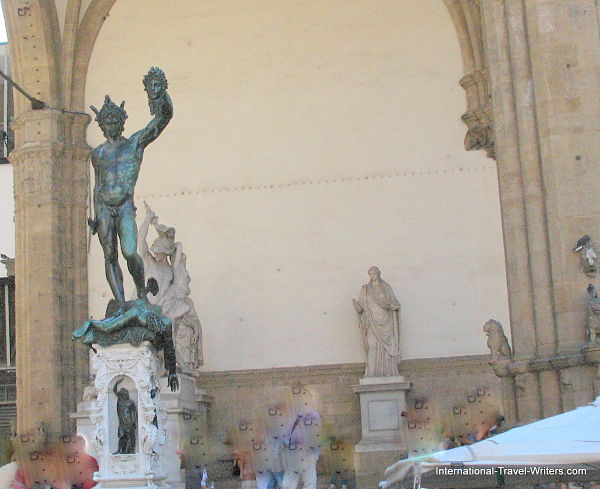
This is Perseus Holding the Head of Medusa. This statue sits in the Loggia dei Lanzi (across from the Palazzo Vecchio Museum). This famous statue has recently been restored. The sculpture itself is original but the pedestal has been replaced and is now a replica. The four small bronze statuettes beneath Perseus are Jupiter, Mercurius, Minerva and Danae.
It was the first statue placed under the Loggia - 1554. A little known fact is that Benvenuto Cellini sculpted his image in the back of Perseus' helmet.
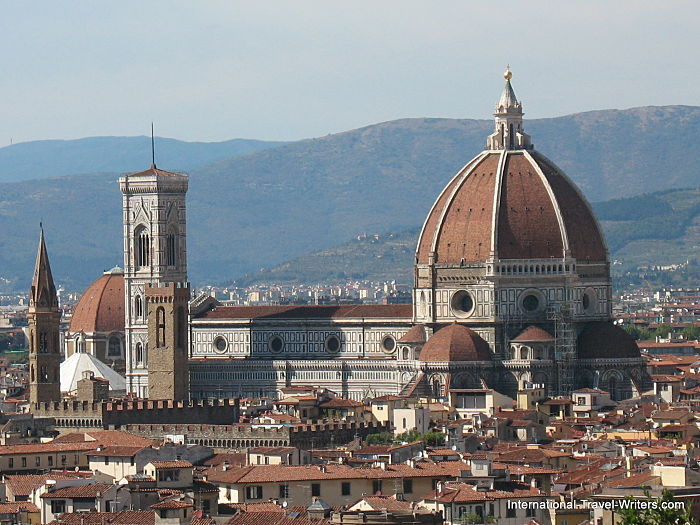
The Basilica Di Santa Maria del Fiore (Basilica of Saint Mary of the Flower) is the main church of Florence. The Duomo, its nickname, was begun in 1296 in the Gothic style and completed in 1436. The exterior of the basilica is faced with polychrome marble panels in various shades of green and pink bordered by white and has an elaborate 19th century Gothic Revival facade.
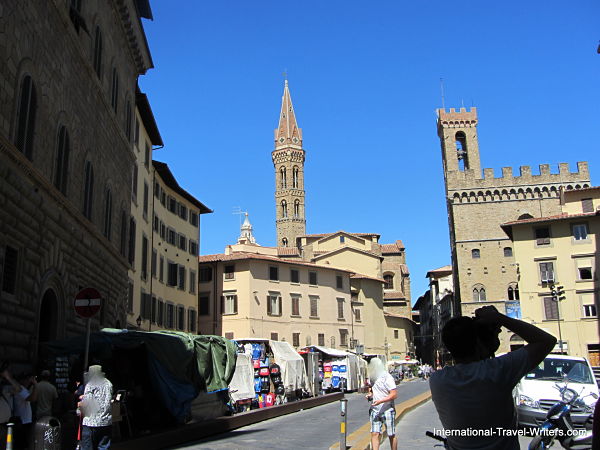
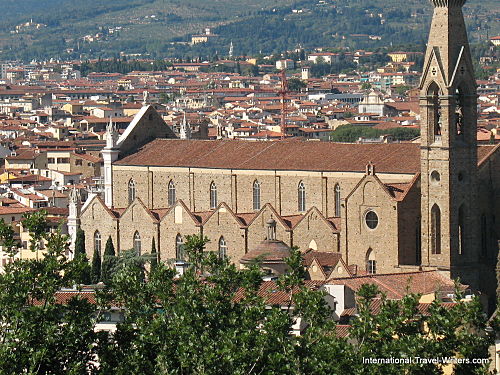
The Basilica of Santa Croce (Basilica of the Holy Cross) is the principal Franciscan church in Florence and the largest Franciscan church in the world. It features 16 chapels, many of them decorated with frescoes by Giotto. The current church which replaced an older building was started in 1294 and it was consecrated in 1442. It is the burial site of some of the most illustrious Italians such as Michelangelo, Rossini, Galileo, and Machiavelli. It is also known as the Tempio dell'itale Glorie (Temple of the Italian Glories).
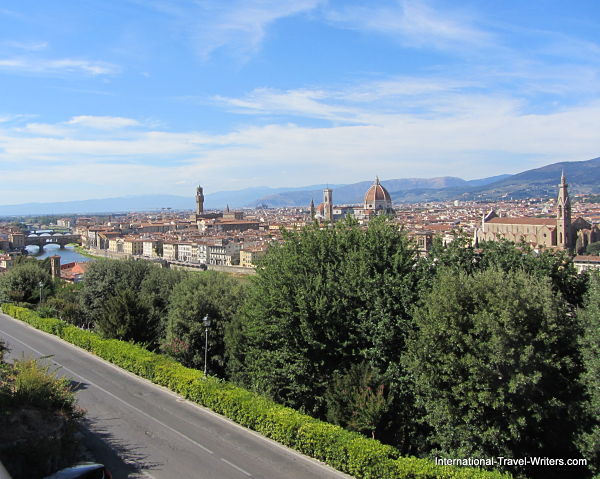
The vista of Florence was spectacular as our tour bus edged up the hill. The photo was taken from Michelangelo Square (Piazzale Michelangello) at the top where we stopped.
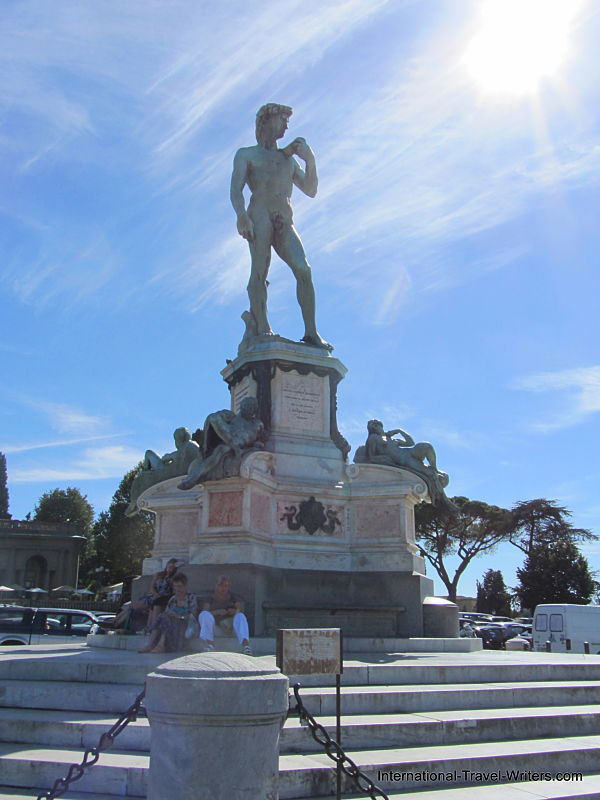
Piazzale Michelangelo is a square dedicated to the great Renaissance artist. It was designed in 1869 by the the Florentine architect Guiseppe Poggi. As we left the city on our transport back to the ship we were amazed to see a look-out point...a viewing area...that showcased David once again. This was on the south end overlooking the Arno and most of the city.
This is such a major art piece that it was delightful to see different sites that showed the magnificence of this sculpture in different environments. Statues of David are in several places in the metro area of Florence but this one is made in bronze while the originals are all of white marble.
Having trouble finding what you need? International Travel Writers Index and Map
OR
Do you have a travel experience or story to share? Share your travels here!
Related Articles......
Return from Florence to International Travel Writers Homepage
By Carolynne Woods, © Copyright 2010-2020. International Travel Writers.com All rights reserved images and text
